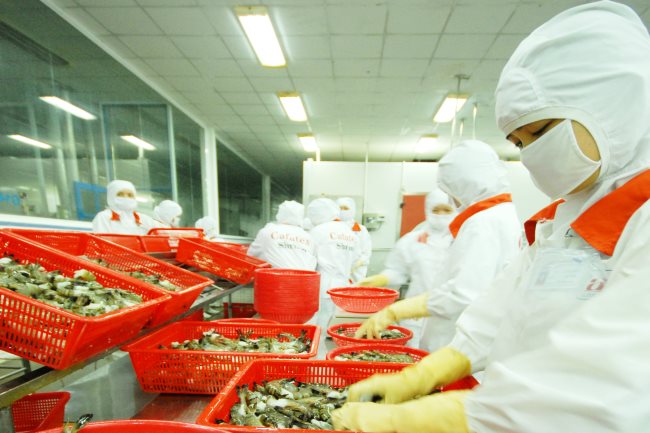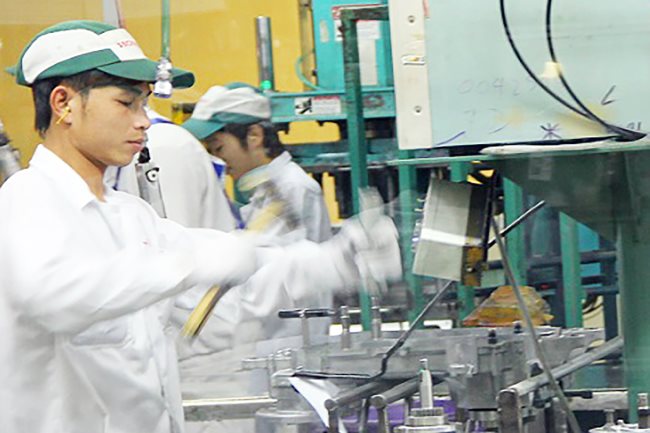Turning challenges of trade war into opportunities for CLMVT countries
Turning challenges of trade war into opportunities for CLMVT countries
In the context of the US-China trade war, Vietnam is considered the greatest beneficiary as numerous mega-corporations are moving production bases from China to avoid tariffs, confirmed speakers at CLMVT Forum 2019.
In the framework of the two-day CLMVT Forum 2019 taking place in Bangkok, Thailand, the evening dinner on June 23, 2019 highlighted a conversation on the US-China trade war and what it means for the ASEAN, in which distinguished speakers shared their views on the regional and global effects of the trade tensions and offered suggestions on how to turn challenges into opportunities.
At the welcome dinner, a visionary speech titled "Are the US and China doomed to enmity?" was made by Professor Kishore Mahbubani, senior advisor and public policy professor at National University of Singapore.
The Cambodia, Laos, Myanmar, Vietnam, and Thailand (CLMVT) region has shown remarkable growth amid the global recession and geopolitical instability. Between 2013-2017, the region has shown an impressive compound annual GDP growth rate of 4.25 per cent. In the same period, the CLMVT region's external trade also expanded at a compound annual average of 4.8 per cent.
"We have accomplished many significant milestones in the last decade and I have every reason to believe that we will continue rising above any challenges coming our way," said Chutima Bunyapraphasara, Deputy Minister of Commerce and Acting Thai Minister of Commerce, the presider of the welcome dinner.
According to Bunyapraphasara, since the US and China have renewed their efforts, what is known as the trade war has expanded to the technological sector. When tension arises between two global powers, a ripple effect reaches the rest of the world. An escalating trade war can lead to an economic crisis that will stall progress everywhere in the world.
The World Bank and the International Monetary Fund (IMF) warned about the prospects of slowing economic growth as a result of trade disputes. The IMF predicts that the tariffs placed by the United States and China on each other's imports could reduce global gross domestic product by 0.5 per cent or $455 billion next year.
"Yet we know there are some advantages to be gained during this power struggle. Strategic CLMVT products such as food and agricultural products can possibly gain a market share in the US and China as a result of their retaliatory tariffs. However, as exporting countries and production bases, the CLMVT region performs best when global trade is dynamic and expanding," Bunyapraphasara said.
"We need to be looking into becoming an integral part of the global value chain and diversifying our markets and products, combining our advantages such as strategic locations and capable workforce with innovation and technologies," she added.
The conversation on "Trade war: What it means for ASEAN" meanwhile, saw active participation of top minds from Thailand and the ASEAN, namely Lee Chen Chen, director of Policy Programmes, Singapore Institute of International Affairs; Somprawin Manprasert, executive vice president, chief economist, and head of the Research Division of the Bank of Ayudhya PCL; and Montri Mahaplerkpong, vice chairman of the Federation of Thai Industries, with Pimchanok Vonkorpon, director general of the Trade Policy and Strategy Office under the Thai Ministry of Commerce.
Vonkorpon said that the study by regional analysts shows that trade war has helped more then triple investment capital to the ASEAN or over $500 billion.
"Since the beginning of the trade dispute, many mega-corporations have already moved their production bases from China to Vietnam in order to avoid tariffs. China has also recognised the ASEAN as its strategic destination for trade and investment. This year, more than 4,000 Chinese companies have already shifted their production grounds to Southeast Asia creating jobs for more than 300,000 people," she added.
"From Thailand's perspective, the export share of Thai products in CLMVT countries is comparable to that of Thai exports to the US, and we are enjoying the upward trend. CLMVT is therefore very significant in regional growth and risk diversification. The CLMVT should take advantage of production base shift through two main approaches – one being the transformation of family-owned businesses into corporate organisations with a focus on the application of technology and management expertise. The other approach is to develop the connectivity of digital platforms to capture the remarkable growth of e-commerce and the consistent growth of middle-class consumers in the CLMVT. Business enterprises have to be equipped with digital knowledge in order to embark on e-commerce business," said Vonkorpon.
The CLMVT Forum is a gathering of the region's top minds from the government, the private sector, and academic circle to meet, discuss, and formulate guidelines on economic prosperity and the sustainable future development of the region. Being the third of its kind, CLMVT Forum 2019 is held at Renaissance Hotel Bangkok Ratchraprasong under the theme "CLMVT as the new value chain hub of Asia". It is attended by over 500 participants.
"Participants to the CLMVT Forum 2019 will greatly benefit from business ideas, innovative policy solutions, and life-long partnerships formed from here. During a time of change, co-operation is most important. The CLMVT region has strong potential to become a centre of the global value chain, and through our unified efforts, I believe the future is near," Bunyapraphasara concluded.




















